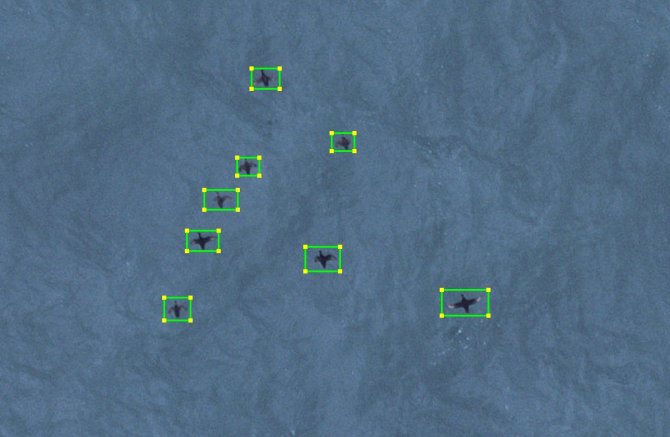News
Artificial intelligence will help map birds and marine mammals in wind farms
The increased height of wind turbines makes it more difficult to monitor the presence of birds and marine mammals in offshore wind farms using planes with human observers. Aircrafts mounted with high definitions cameras offer a solution, as these counts can be carried out from a higher altitude. The use of artificial intelligence (AI) to automatically analyze these images is being investigated by a research consortium. This may solve the bottleneck of the labor-intensive manual and therefore costly image analysis.
For the further rollout of wind energy in the North Sea, the Dutch government needs to know what impact these wind farms have on birds and marine mammals. This requires insight into the temporal and spatial distribution of individual species in and around wind farms. This information is currently collected by human observers performing counts from an aircraft. Such an approach has become more difficult due to the increased height of wind turbines. For safety reasons, aircrafts must fly so high that reliable human observations are almost impossible.
The use of high-definition cameras during aerial surveys may offer a solution. These cameras collect high quality video images of birds and marine mammals during flights that can be conducted at higher altitudes. Another advantage is that these digital observations can be stored for future analysis. However, up to now the assessment of such types of images is labor-intensive human work. To speed up this part of the process, making it more efficient and thus cheaper, AI will be used for automatic image recognition.

Development of AI Models
The research consortium is developing AI models capable of detecting species on video images, identifying them, and counting the individuals per species. The initial focus is on seabirds, but where possible other species groups, such as seals and porpoises, will also be considered. To develop the necessary self-learning software, high-definition video images were collected by BioConsult SH at Gemini Windpark and wind farm Borssele. Experts from this German knowledge institute are visually analyzing these images and identifying species so that they can be fed to the AI model as training data.
According to WUR researcher Freek Daniëls, artificial intelligence can provide access to data to better understand ecosystems. "Sensors combined with AI make it possible to have objective species counts that are potentially more complete, accurate and cheaper to perform than conventional methods" he says. "Within AI, we train on biologically inspired neural networks, which are able to recognize the various types of species based on a large number of examples." Daniëls points out that there are still plenty of challenges. "For example, despite the high resolution images, due to the flying height, there is often only limited information available per bird or marine mammal. Also, for much rarer species, there are fewer images available for the model to learn from, influencing reliability."
Collaborative project is supported by Wozep ecological programme
The image collection through the high-definition aerial surveys and the development of the AI for monitoring birds and marine mammals in offshore wind farms is a collaborative project of Gemini Windpark, BioConsult SH, Observation International, Wageningen Agro Food Robotics and Wageningen Marine Research. A research question from Gemini Windpark, on the avoidance by certain bird species of wind farms, helped make this project possible. The project is supported by the Dutch Governmental Offshore Wind Ecological Programme (Wozep) of Rijkswaterstaat. Wozep is providing a set of images made over Borssele Wind Farm to the project.